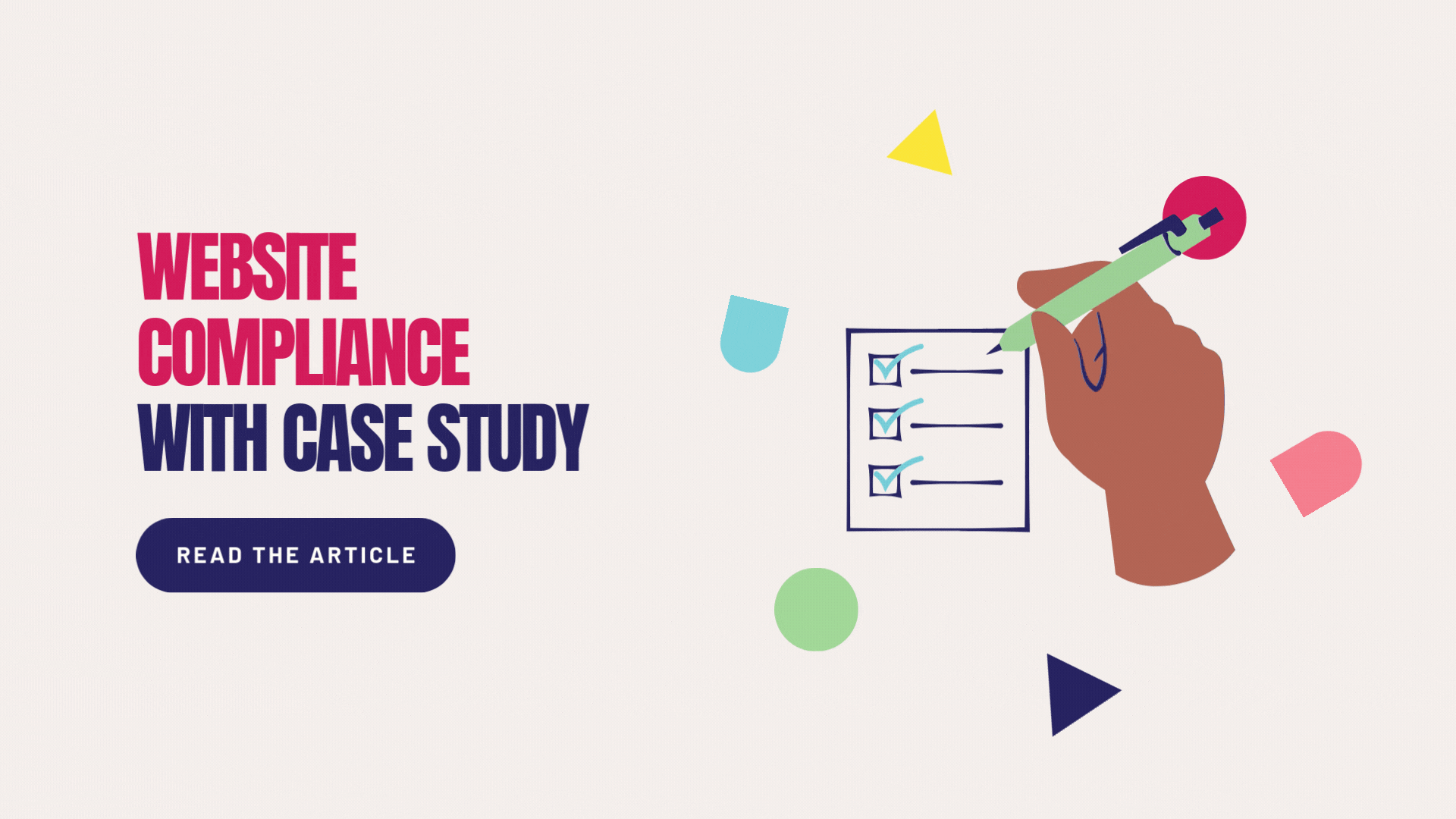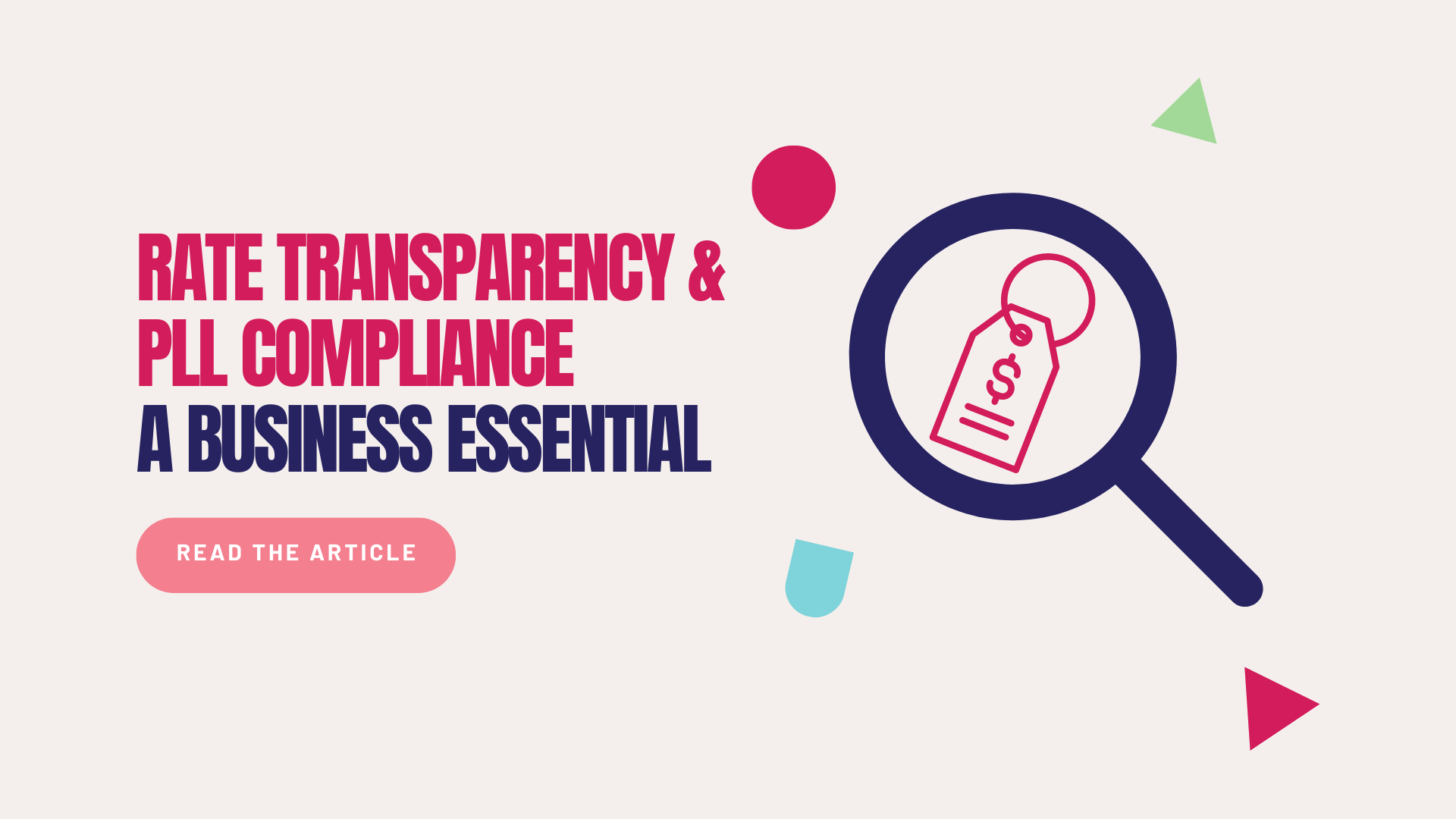This guide is built for marketing leaders, digital strategists, and compliance officers who manage complex websites and need clear, actionable answers.
You’ll find a breakdown of today’s core compliance requirements, including legal, technical, accessibility, and brand, along with the tools and strategies that actually move the needle.
We’ve also included a behind-the-scenes case study of a multi-hotel website redesign that increased both compliance and performance. It’s a practical roadmap for improving your website without compromising conversions, search visibility, or user experience.
If you’re responsible for a high-traffic or multi-brand digital presence, this guide will help you identify risks, align stakeholders, and make smarter decisions.
→ Request a Free Website Compliance Audit
Table of Contents
What is Website Compliance?
Website compliance refers to how well your site meets a range of regulatory, technical, industry, and brand standards designed to protect users, your business, and your bottom line.
Think of website compliance like making sure your website follows the good neighbor rules of the internet. This means using best practices for things like:
- User Accessibility: Making sure everyone can browse and navigate your website smoothly, have access just like having a clear path to your front door.
- Data security: Keeping visitor information safe and secure, like locking your doors and windows.
- Privacy protection: Following the rules about how you use visitor information, just like respecting your neighbor’s privacy.
Why Do You Need It?
There are four main reasons why you might want to consider website compliance:
- Legal Protection: Website compliance can help website owners avoid legal penalties by ensuring compliancy with different laws and regulations, some of these include the GDPR, CCPA and HIPAA.
- User Experience: Website compliance goes beyond aesthetics. It ensures everyone can access your site, following WCAG best practices. While not universally mandated, some countries like the US with ADA requires accessible websites for public entities.
- User Trust and Confidence: Beyond legal requirements, compliance builds trust with users. Knowing a website follows regulations and protects their privacy creates a sense of security and enhances the overall user experience.
- Market Access: By ensuring the website is accessible to all users and complying with international regulations like GDPR, it allows the website to legally function in different jurisdictions and broaden the user base.
As you see, it’s no longer just about avoiding lawsuits or ticking legal boxes. It’s everything from accessibility and data privacy to page speed and consistent branding.
When done right, compliance builds trust, boosts usability, and improves visibility in search engines. When neglected, it can lead to costly fines, brand erosion, and frustrated users who never return.
Worse still, many violations aren’t immediately obvious but quietly chip away at your conversions and credibility over time.
At Digital Spice, we view compliance as a layered practice with four core pillars:
- Legal (ADA, GDPR, CCPA, etc.)
- Technical (performance, tagging, mobile-friendliness)
- User Experience (navigation, accessibility, structure)
- Brand (consistency in tone, design, and identity)
It’s not just about avoiding penalties. It’s about setting the stage for growth and showing your users that their experience matters. Because a compliant website isn’t just safer; it’s smarter, faster, and more effective.
How to Ensure Website Compliance
Website compliance is not a single set of requirements, but a layered discipline that spans legal mandates, brand governance, user experience, and technical integrity.
High-performing, enterprise-level websites are built with these dimensions embedded into every decision, from content structure to tag management.
A modern compliance strategy must align with:
- Legal standards such as ADA, GDPR, CCPA, and PLL
- Brand consistency, ensuring messaging, visual identity, and naming conventions are uniform across touchpoints
- Performance and UX, meeting Core Web Vitals benchmarks and ensuring accessibility for all users
- Technical structure, including SEO best practices, proper redirects, and tag governance
The Digital Spice resource library breaks these categories down into tactical frameworks to guide marketing and development teams across large organizations.
Tools of the Trade: Industry-Grade Evaluations
🌶️ Osano – privacy management and data compliance, specializing in GDPR and CCPA readiness
🌶️ SilkTide – platform for compliance scoring, accessibility testing, and SEO performance
🌶️ Monsido – detailed scanning across brand, legal, and accessibility criteria
🌶️ Siteimprove – comprehensive quality assurance and governance tracking
🌶️ Google Lighthouse & Core Web Vitals – performance and UX benchmarking
🌶️ WAVE, Axe, and LERA – for WCAG 2.1 compliance and accessibility testing
Steps to Website Compliance (Summary)
For a quick overview, here are some process highlights to get you started with building a compliant website or enhancing your existing one:
Step 1. Identification
Research local regulations and policies that apply to your website based on factors like location, industry, and target audience.
Consulting with legal professionals can help ensure you understand all legal requirements and implications.
Step 2. Implementation
Develop a comprehensive privacy policy that aligns with data protection regulations. Then create terms and conditions outlining the rules and guidelines for using your website.
Finally, implement a cookie consent banner to inform users about how their data is used and obtain their consent.
Step 3. Ensure Data Protection and Security
Website owners must obtain a Secure Sockets Layer (SSL) Certificate through a Certificate Authority, which verifies the identity of a website and secures communication between web browser and website.
Step 4. Ensure Accessibility
Follow the Web Content Accessibility Guidelines (WCAG) to create a website that’s usable by everyone, including people with disabilities.
Step 5. Monitor and Update
Maintaining compliance is an ongoing process. Regularly audit your website for compliance, stay updated on legal changes, and update all policies and tools as needed.
Step 6. Document Compliance Efforts
Lastly, maintain a record of all your efforts to make your website compliant and accessible for users including procedures, audits, policies, regulations and updates.
The information stored can create transparency with users and stakeholders.
Further Reading: Deep Dive Resources From Digital Spice
🌶️ Accessibility & ADA Compliance Guide
🌶️ Website Performance & Core Web Vitals
🌶️ Cookie Consent, Terms, and Transparency
🌶️ Customer Contact & Data Privacy
🌶️ Tag Management & Marketing Compliance
🌶️ ️Rate Transparency & PLL Compliance
️🌶️ Brand Compliance on the Web
Case Study: Redesigning an NYC Multi-Hotel Website to Increase Compliance Score
Earlier this year, Digital Spice led the redesign and migration of the Affinia.com website into the Sonesta Hotels ecosystem under nyc.sonesta.com.
The primary driver was compliance, across ADA, brand standards, and digital performance, but stakeholders also had concerns about disrupting monthly revenue. The existing site, while technically outdated and non-compliant, was still generating conversions.
So, the redesign had to solve structural and compliance issues without compromising performance.
Additionally, the Sonesta team needed to consolidate four Manhattan hotels into a cohesive, modern platform that reflected their brand evolution while retaining loyal Affinia users.
→ You May Also Like: Website Migration Guide & Case Study
Pain Points We Identified
🌶️ Over 400 orphaned pages created UX dead ends and hindered crawlability
🌶️ URL structures, metadata, and page content lacked alignment, confusing users and search engines
🌶️ Accessibility disclosures were inconsistent or missing entirely across properties
🌶️ Branding was fragmented, with mixed references to Affinia and Sonesta and inconsistent hotel naming conventions
Our Strategic Solutions
Information Architecture Overhaul
We rebuilt the site’s structure from the ground up. Our team:
- Organized hundreds of pages into a logical hierarchy
- Consolidated orphaned and redundant content under streamlined URL structures
- Developed a comprehensive 301 redirect plan to maintain SEO equity and eliminate broken pathways
Content Strategy and Meta Optimization
We conducted a full audit of on-page and meta content. Then, we:
- Rewrote URLs and meta tags to align with the page’s actual content and keyword intent
- Eliminated duplicate or misleading meta descriptions
- Preserved high-performing content while correcting SEO and compliance gaps
→ You may also like: Franchise SEO Master Guide
Improved UX Journeys
We designed clear, audience-driven navigation by:
- Creating top-of-funnel pages to introduce the four-property Manhattan portfolio
- Building rich drop-down menus with direct pathways for families, business travelers, couples, and extended-stay guests
- Clarifying conversion funnels with intuitive calls-to-action and relevant content modules
Brand and Accessibility Compliance
To align the experience with Sonesta’s standards and improve accessibility, we:
- Applied consistent design templates guided by Sonesta’s brand manual
- Standardized hotel names and brand language across all page content and metadata
- Scanned and updated accessibility details for each hotel
- Added visible migration cues for returning Affinia guests, including homepage ribbons, strategic mentions, and targeted SEO metadata
- Introduced information about hotel’s accessibility features, making it easily accessible from website footer
Results & Impact
We achieved measurable improvements across compliance, performance, and organic visibility:
- Increased the SilkTide compliance score from 66 to 81, aligning the site with current accessibility, SEO, and quality standards
- Improved crawlability and internal linking, making content more accessible to users and search engines
- Strengthened brand consistency across all four properties with unified messaging and visual standards
- Boosted organic traffic through enriched content, optimized metadata, and a more intuitive user experience
- Designed TOFU content and segmented user pathways that improved engagement and time on site
- Enhanced the platform’s technical foundation with scalable architecture and seamless GA4 and Google Tag Manager integrations
Let’s Talk Compliance (and Conversions)
At Digital Spice, we don’t just build beautiful websites. We engineer compliant, high-performing digital ecosystems that scale with your brand.
Whether you’re managing multiple properties, operating under a franchise umbrella, or overseeing a large organization with legacy platforms, we bring the strategy, tools, and technical chops to elevate your digital experience.
We’ve helped brands like Sonesta streamline complex site structures, stay ADA and brand compliant, and preserve (even grow) monthly revenue, all while improving their compliance scores dramatically.
🌶️ Interested in a free website compliance audit and custom quote?
Let us assess your current site and show you exactly where you can reduce risk, improve usability, and unlock hidden opportunities.
👉 Request your free audit – No strings, just spice.








